Isometrics in tendinopathy – a wonder weapon to decrease pain?

Are isometrics the wonder weapon to decrease pain in tendinopathy? In this blog, we will discuss where the isometrics “trend” came from and what the evidence says about it!
In 2015, Rio et al. started a bit of a trend when they conducted a cross-over trial on 6 volleyball players with patellar tendinopathy. Their results were astonishing with all players experiencing an immediate decrease in pain from an average of 7/10 on the NRS to 0 with only one of the 6 reporting a remaining pain of 1– for at least 45 minutes after the isometric contractions. The protocol they used was 5 sets with 45 seconds contraction in a leg extension machine and an effort of 70% of the maximal voluntary effort. They also found that isometrics were able to decrease cortical inhibition and an increase in strength of 19%. They compared the isometric intervention with an isotonic intervention and the effects seen in the isometric group could not be achieved in the isotonic group:
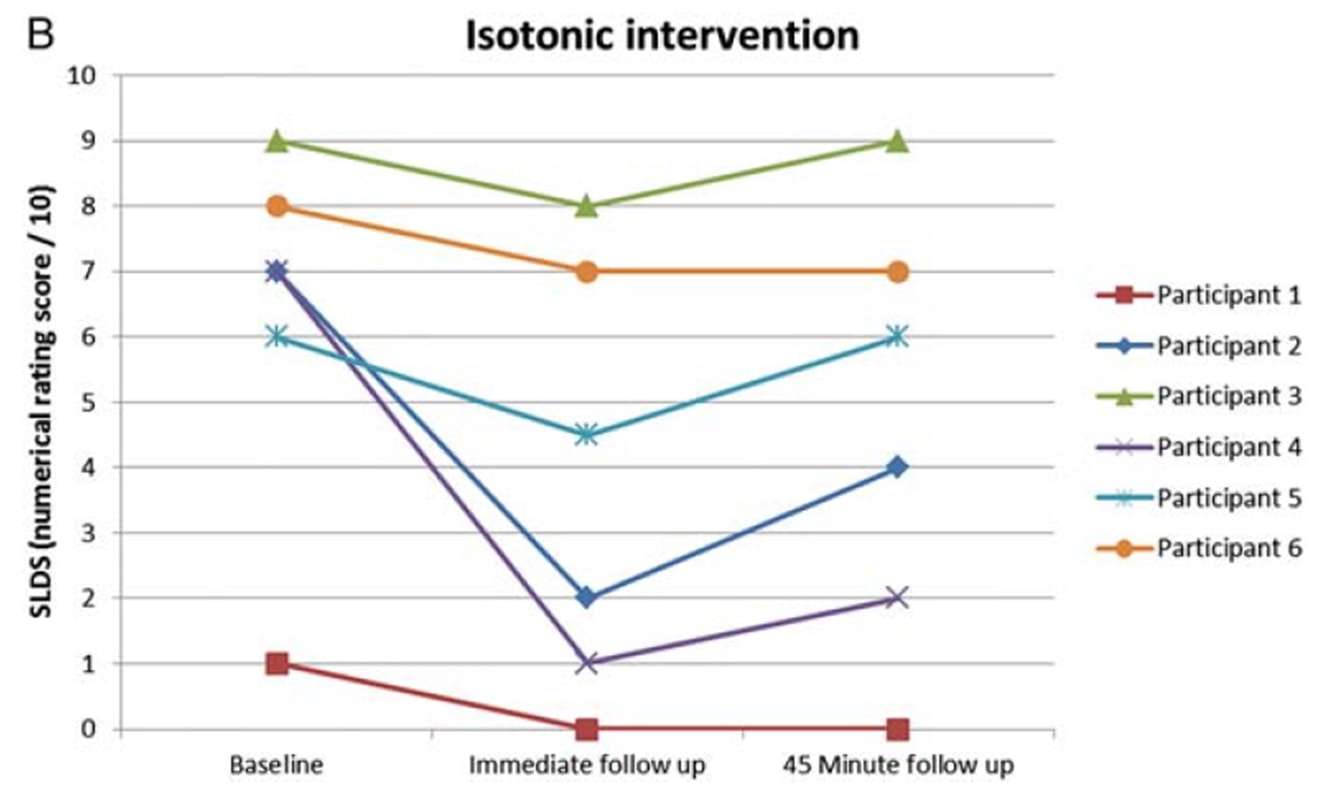
The same authors did a follow-up in-season study with jumping athletes two years later (Rio et al. 2017) in which they compared an isometric program and an isotonic program to each other. In this study the results were a bit more heterogeneous with both groups with a greater immediate pain decrease in the isometric group:
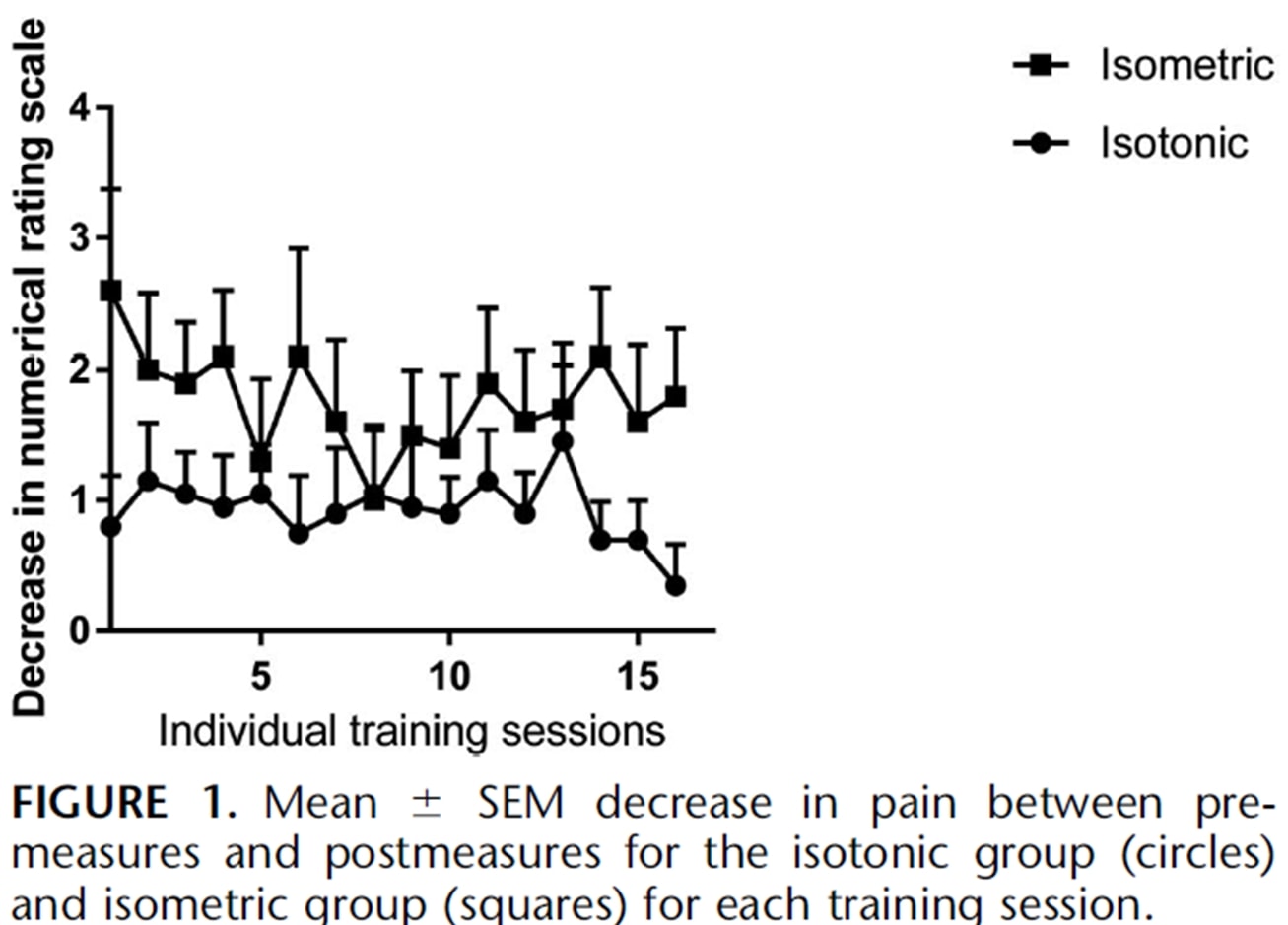
A recent study by Holden et al. (2019) looked at the effect of isometrics in patellar tendinopathy as well and did not find any analgesic effect:
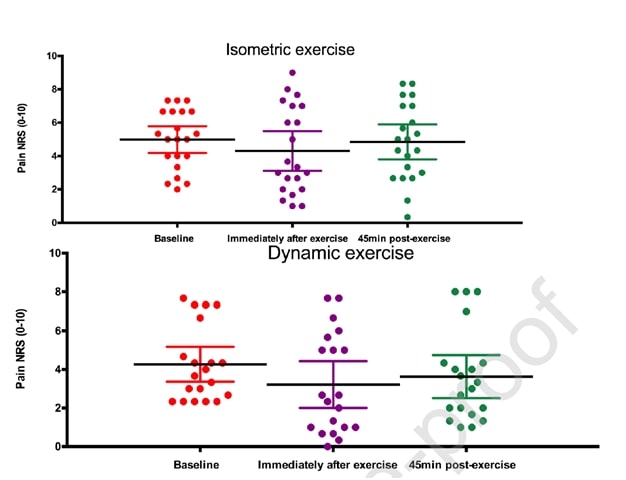
However, a high percentage of women and a relatively high average age is untypical for patellar tendinopathy, which is usually a disease of young jumping men. So it could be that the diagnosis of patellar tendinopathy was not correct in some cases. Now while those two studies were conducted for patellar tendinopathy, let’s look if we can transfer these results to other tendons.
Looking at the Achilles tendon, Seth O’Neill et al. (2018) did a study in which they had a group of patients with Achilles tendinopathy performing isometric contractions of the plantar flexors. They found no immediate pain relief nor improved motor output in patients with Achilles tendinopathy:
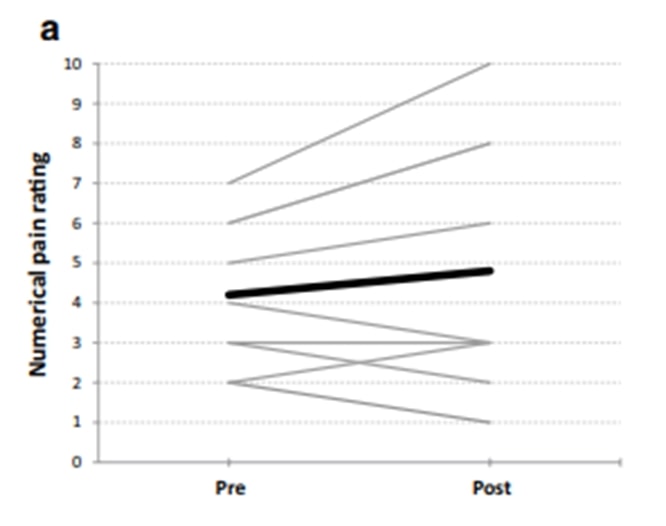
A study by Riel et al. (2018) examined the effects of isometrics, isotonics, and walking on pain for plantar fasciitis. They found that there was no change in pain for any of the groups before to after the exercises:
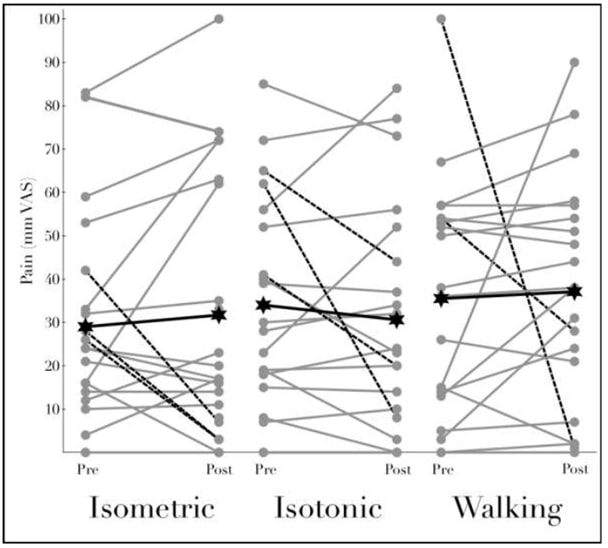
At last, Coombes et al. (2016) looked at isometrics on lateral epicondylalgia. In their study, isometric contractions above the patients’ pain threshold actually increased their pain levels after the exercise, while isometric contractions below the patients’ pain threshold had no effect compared to a control group:
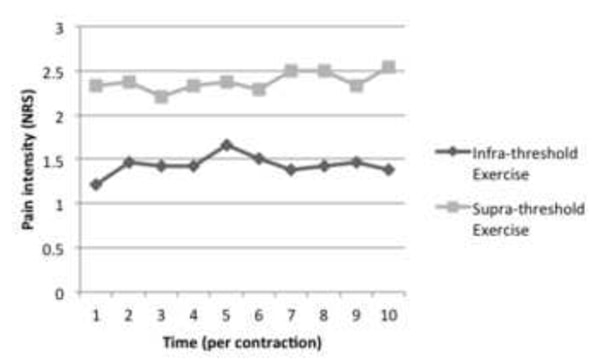
Another study from Stasinopoulos et al. (2017) compared three exercise groups in the treatment of lateral epicondylalgia: One group performed eccentric training, another eccentric-concentric training, and the third group combined eccentric-concentric training with isometrics. The authors argued that most grip activities require isometric contraction of the wrist flexors and extensors, so adding isometric exercises for LE makes absolute sense. They found that adding concentric led to superior results at pain, function, and grip strength at 4 and 8 weeks:

However, the follow-up time of the study was rather short and should at least have been 12 weeks. On top of that, the combined isometrics group performed a higher exercise volume with more time under tension which could explain the superior results.
So while isometrics are certainly no magic bullet, what role do they play in tendinopathy rehab? First of all, isometrics are a great option to start exercising if everything else is too painful – and this is not only limited to tendinopathy but other conditions as well. Be aware that they must progress to isotonic exercises because you want to recover muscle function over the full range of motion instead of just 1 angle. So move on as soon as a patient is able to tolerate isotonic loads.
Isometrics do not seem to be a magic bullet to decrease pain, but they can be a great starting point for rehab if patients do not tolerate isotonics yet
What can be derived from all of those studies is that isometrics do seem to work really well in some subjects and can actually make things worse in other subjects. To keep it simple, give them a try with the patient in front of you and if they respond favorably, keep doing them, if they don’t move on.
While 45 minutes of pain relief might not be a goal that is important in the average patient, this might be useful for athletes as a warm-up to decrease pain during the ensuing exercise session or competition. Isometrics are also less tiring for athletes in-season compared to isotonic exercises. One can surely argue if it is desirable to achieve short-term pain reduction in order to load a painful tendon during sporting activities and if this might actually lead to detrimental effects.
THE BIG 3 – ADVANCED REHABILITATION OF HAMSTRING, QUADRICEPS, AND CALF MUSCLE- AND TENDON INJURIES
Claim your seat on our online course “The Big 3 – Advanced Rehab of of Hamstring, Quadriceps & Calf muscle and Tendon Injuries” To Improve your Rehab, Reduce Injury Risk and Optimize Return to Play!
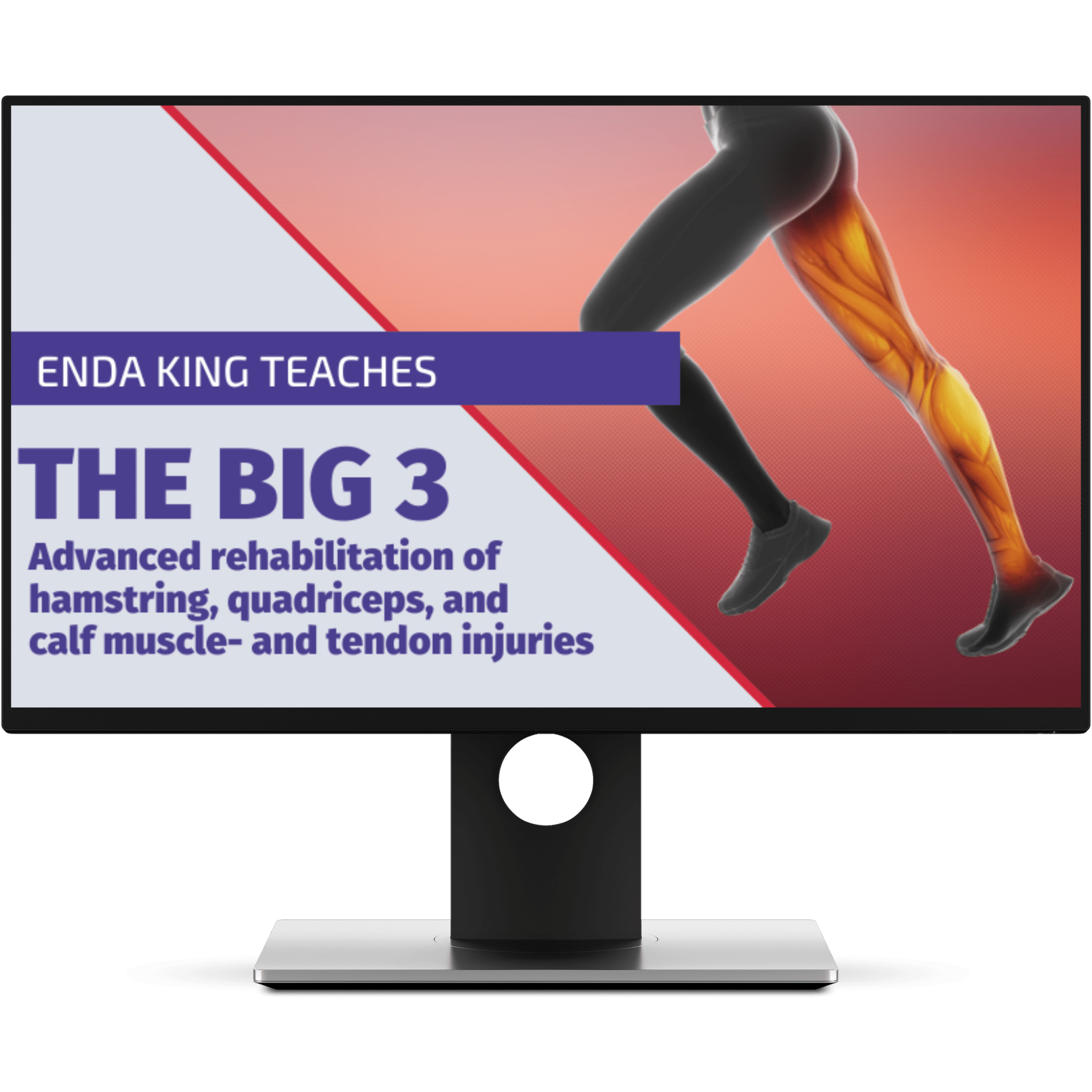
Alright, this was our blog on isometrics for tendinopathy. If you were surprised by the results, you will love our blog on 7 facts about tendinopathy you didn’t know! Thanks so much for reading.
References:

Kai Sigel
CEO & Co-Founder of Physiotutors
NEW BLOG ARTICLES IN YOUR INBOX
Subscribe now and receive a notification once the latest blog article is published.







